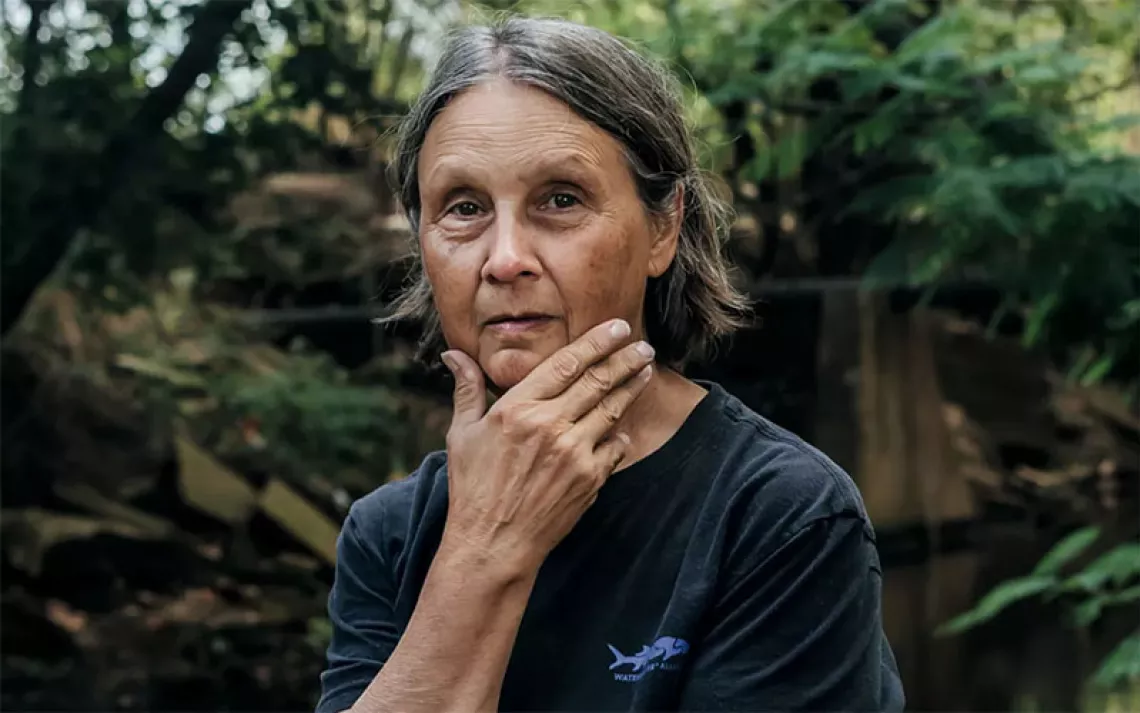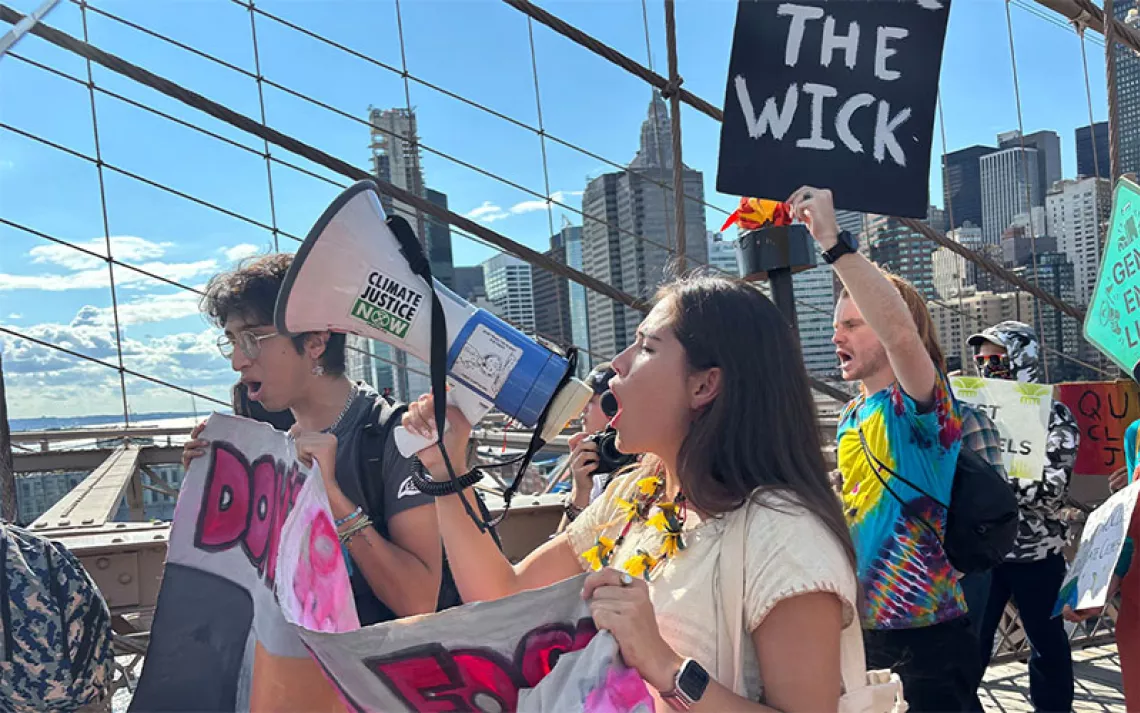Senior Project
How two college students are turning a coal-era relic into a cultural center
For many college seniors, the final semester brings job-market anxieties and an endless round of sending out resumes, checking job listings, and mining leads on LinkedIn.
Not for Tad Cooke and Erick Crockenberg, 2014 graduates of the University of Vermont. They just waited to see whether the voters of Burlington, Vermont, were going to hand them $6.3 million and the chance of a lifetime. The answer, delivered in March, was a resounding yes—a pretty good capstone for a college career. The two longtime best buds have not only a job but also, at the tender age of 23, the opportunity to leave a remarkable legacy.
For the next few years, Cooke and Crockenberg will work to transform the abandoned six-story coal-fired Moran power plant on Burlington's Lake Champlain waterfront from a derelict environmental mess into a landmark of ecological adaptive reuse. In bricks and girders, that translates to an arts venue that will hold 1,500 people, a "nanobrewery," a food court, and creative entrepreneurial spaces for artists and techies, all topped by a rooftop vantage point for lakeside sunsets framed by the distant Adirondacks. "New Moran" will include a geothermal-and-solar power system that produces more energy than the building needs, turning a former smoke-belching behemoth into a showcase of life after coal.
Cooke and Crockenberg's jump into urban redevelopment grew out of their self-designed majors in ecological design and the college town's strong environmental ethic. The pair were raised in the same rural community outside Burlington, attended the same high school, traveled west to ski while living out of the back of a Subaru wagon, and then entered the University of Vermont's highly regarded environmental program.
"We got through the first semester of that year, and we realized independently that it wasn't exactly what we were looking for," says Crockenberg. Discovering that the university allowed self-designed majors, the pair crafted a multidisciplinary path that was both entrepreneurial and innovative, combining facets of science, natural resources studies, agriculture, environmental planning, and grant writing. By their senior year, both had been acknowledged by the prestigious Udall Foundation for their environmental work.
Their plan for Moran came out of the blue—the result of a burst of mental fireworks that happened, aptly, on the Fourth of July in 2012. After wandering downtown to an overlook on the lake following a thunderstorm, they were staring down at the plant as the sun burst out, shooting the breeze and sipping mason jar gin-and-tonics, when the "stereotypical lightbulb" went on. Cooke recalls one of them—he's not sure who—saying, "I don't see why we can't make something happen here."
A week later, Crockenberg emailed the mayor to ask how to get involved in Burlington's plans to improve the waterfront and downtown, and so began the duo's unlikely journey to preserve and reimagine a building reflecting the city's industrial history.
Burlington had spent nearly three decades pondering what to do with the rusting vestige. Costly to tear down and challenging to redevelop, the city-owned Moran plant had stymied numerous earlier efforts.
"We were coming to it with nothing to lose," says Cooke. So they could shoot for the moon. Raising nearly $20,000 through a Kickstarter campaign, they created Room 9 Redevelopment (named after the art studio where they did a lot of brainstorming) and submitted their proposal last fall. They were as surprised as anyone when it bested 29 others in a lengthy public vetting.
"We were absolutely unqualified for this," Cooke admits. But the hyperkinetic pair, burning collegiate late-night oil, used the networking and collaborative skills they'd learned in their major to reel in Smith Buckley Architects, which has completed sustainable projects for Ben & Jerry's, the Preservation Trust of Vermont, and fellow Vermont grad Jeffry Glassberg, whose Renaissance Development Company has done redevelopment projects across the country. Burlington developer Charlie Tipper, wowed by their ideas and "smart work," jettisoned his own competing proposal for Moran and jumped aboard as a partner.
In March, Burlington voters authorized bonds for six waterfront projects, including Cooke and Crockenberg's New Moran scheme. (The duo aren't free of final-exam jitters quite yet: The ballot language enables the city to tear down the building if the project doesn't pan out.) Cooke and Crockenberg are now employed as contractors and sit on the project's nonprofit board, working to raise $34.9 million in financing, with a plan to begin construction in early 2016.
The whirlwind of the last year hasn't left much time to reflect on their accomplishments and recent graduation, but Cooke says they hope at some point to celebrate by pulling off some collegiate sort of hijinks: standing atop the six-story building and seeing how far they can knock a golf ball.
"We haven't done that yet," says Cooke, laughing. "The timing just hasn't been right."
 The Magazine of The Sierra Club
The Magazine of The Sierra Club





